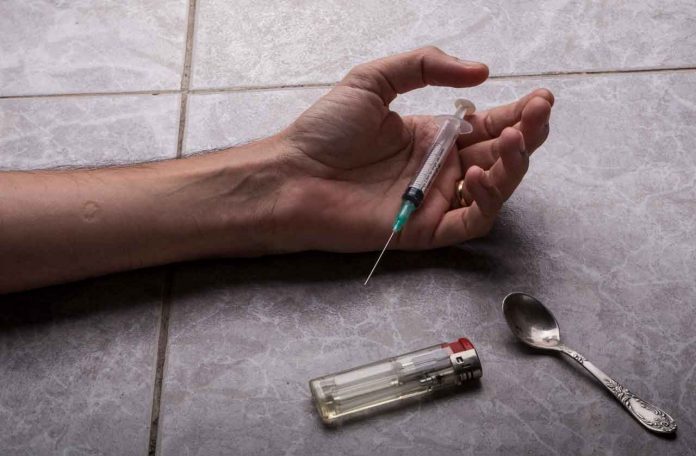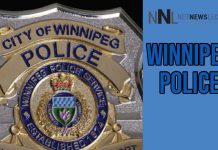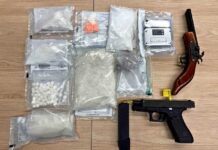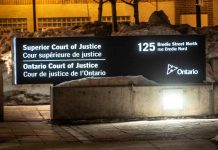THUNDER BAY, ON – The opioid and overdose crisis continues to take lives across the country, and Thunder Bay is no exception. Thunder Bay has witnessed a devastating rise in overdose deaths linked to illegal drugs, such as fentanyl and other dangerous opioids, leaving families shattered and the community searching for solutions.
Tackling this crisis requires a multi-pronged approach, involving legal action, public awareness, and proactive steps by families to safeguard their loved ones.
First Responders Role in the Solution
Police and Paramedics are usually the first authorities on the scene of an overdose victim. It is important for police to maintain investigative objectivity. Police are tasked with investigating crimes. Drug dealers can often provide drugs that are designed to kill a person using them, too much fentanyl in a “hot shot” is a means of sending a message to a person who may have unresolved issues with drug dealers and/or links to a close loved one that may.
Police should treat each death like a homicide until the evidence proves otherwise.
When police arrive at the scene of a deceased person where a drug overdose is suspected, they must follow specific procedures to ensure the scene is handled correctly, preserve evidence, and determine the cause of death.
These procedures are crucial for both investigating potential criminal activity (such as drug trafficking) and ensuring public health protocols are followed. Here’s a breakdown of the steps police typically must take in such cases:
1. Secure the Scene
The first priority for police is to secure the area to ensure safety and preserve the scene for investigation. This includes:
- Keeping bystanders away from the scene.
- Identifying and containing any hazardous substances, particularly if dangerous drugs like fentanyl are present, which can be lethal to first responders through accidental contact.
2. Determine Immediate Medical Assistance
Police work alongside emergency medical services (EMS) to determine if any lifesaving measures can be performed. If there is any indication that the person may still be alive or revivable, officers will prioritize medical assistance or administer Naloxone if available and safe to do so.
3. Notify the Coroner or Medical Examiner
If the individual is confirmed deceased, police must immediately notify the local coroner or medical examiner. The coroner will typically take charge of determining the exact cause of death and whether an autopsy is required. Police will assist in gathering initial information, but the coroner’s involvement is legally mandated for any sudden or unexplained deaths, including suspected overdoses.
4. Preserve and Collect Evidence
The police are required to treat the scene as a potential crime scene, particularly in cases where drug trafficking or foul play is suspected. Procedures include:
- Documenting the scene: Officers will photograph the location, the body, and any evidence such as drug paraphernalia, packaging, syringes, or pills.
- Collecting physical evidence: Drugs, personal belongings, and any notes or containers found near the deceased are collected for analysis.
- Checking for identifying information: Any identification or documentation on or near the body is collected to help confirm the victim’s identity.
5. Interview Witnesses
If any witnesses are present, such as friends, family members, or bystanders, police will conduct immediate interviews. They will gather information about the deceased’s recent behavior, drug use history, and details about where the drugs were sourced, which may assist in tracking drug suppliers.
6. Investigation for Criminal Offenses
In overdose cases, law enforcement may open a criminal investigation, particularly if evidence suggests drug trafficking or distribution. The focus here is to:
- Determine if anyone was involved in supplying or selling the drugs.
- Investigate if the drugs were adulterated with lethal substances like fentanyl.
- Examine the chain of drug distribution to potentially charge dealers with criminal negligence, manslaughter, or drug trafficking if their actions led to the death.
7. Autopsy and Toxicology Report
While the coroner conducts the autopsy to determine the cause of death is it common that a police officer be present. This maintains a chain of evidence for their investigation. Remember it should be treated as a crime until the evidence points elsewhere. Police should request a toxicology report. This report identifies the types and quantities of drugs in the deceased’s system and can confirm whether the death was indeed caused by an overdose.
8. Collaboration with Specialized Units
In some jurisdictions, specialized police units such as drug enforcement teams or overdose task forces may take over or assist with the investigation. This allows for a deeper investigation into the source of the drugs and any larger trafficking networks that might be involved.
9. Family Notification and Support
Once the deceased’s identity is confirmed, police are responsible for notifying the next of kin. In overdose cases, this can be particularly sensitive, and officers should be fully trained to provide support and direct families to resources for dealing with drug-related deaths, such as grief counseling or addiction support groups. Sadly there are far too many cases where is is not done, and even cases where NetNewsLedger is aware police have left a person alone after telling them of the death of a loved one. It is often one police officer who is present to inform a family member when it should be two officers, and perhaps a trained mental health worker as well.
10. Filing a Report
Police will complete a detailed report of the scene, the evidence collected, witness statements, and any actions taken. This report will be crucial for both the coroner’s findings and any potential criminal proceedings.
Legal Remedies: Holding Drug Dealers Accountable
In response to the alarming rise in overdose deaths, law enforcement agencies are taking a hard stance against those distributing dangerous substances. Under Canada’s legal framework, drug dealers can face severe penalties, especially when the drugs they distribute result in harm or death.
One key legal remedy is criminal negligence causing death, which allows the Crown to charge individuals whose actions lead to fatal overdoses. This can apply to drug dealers who knowingly sell contaminated or high-potency substances. Additionally, under the Controlled Drugs and Substances Act (CDSA), individuals caught trafficking illicit drugs like fentanyl or carfentanil can face significant penalties, including lengthy prison sentences.
“In a recent case, R. v. Walker (2019), a 23-year-old man was convicted of one count of trafficking fentanyl and one count of criminal negligence causing death after he sold several drugs, including heroin and fentanyl, to a friend (Mr. Kelly) who died as a result. The defendant was a ‘low level’ drug dealer and was aware of the dangers of fentanyl use. He had previously told another customer that “only a line [of fentanyl] can kill you”.
“The defendant entered a guilty plea before the preliminary inquiry to allow speedier closure for the victim’s family, and the judge viewed the early guilty plea as a mitigating factor in sentencing. On the other hand, the judge found the defendant’s actions as being single-mindedly profit-driven such that he provided a potentially lethal drug to a friend. And, the defendant’s perceived indifference to a conceivable loss of life, along with a desire to discourage the sale of deadly opioids in the area, suggested that a denunciatory sentence is needed”.
In some cases, the Crown can pursue charges of manslaughter against drug dealers if it can be proven that their actions directly led to an individual’s overdose death. These legal tools empower the justice system to hold those responsible for trafficking lethal drugs accountable and aim to deter the sale of dangerous substances in our communities.
You can watch the Superior Court of Justice online via Zoom to see how justice is delivered in Thunder Bay. You cannot comment or engage, you are an observer only when watching.
Here is how to observe:
Thunder Bay Court, 125 Brodie St N, room 105 direct login with Meeting ID and passcode included:
https://ca01web.zoom.us/j/61562719216?pwd=T1ZYYm5xWFNDOFJoZW1kNGZTeDJDUT09
Telephone dial-in: 1-855-703-8985 (toll free)
Meeting ID: 615 6271 9216
Passcode: 042968
What Families Can Do to Prevent Overdoses
While legal actions are essential, prevention begins at home. Families in Thunder Bay are on the front lines of this crisis, and there are steps they can take to protect their children from falling victim to dangerous drugs:
- Open Conversations About Drugs: Many young people experiment with drugs without fully understanding the risks. Parents and guardians should engage in honest, non-judgmental conversations with their children about the dangers of opioids and synthetic drugs. Make sure they are aware of how even a single dose of certain drugs can be fatal.
- Monitor Behavior and Social Circles: Sudden changes in behavior, mood, or social circles can be warning signs of drug use. Pay close attention to these shifts and address any concerns promptly. Knowing who your child spends time with and where they hang out can provide insight into their activities.
- Support Mental Health: Mental health struggles, including anxiety, depression, and trauma, often contribute to substance abuse. Ensuring that your loved ones have access to counseling, therapy, or other mental health services can help address these underlying issues before they lead to drug use.
- Have Naloxone on Hand: Naloxone is a life-saving medication that can temporarily reverse the effects of opioid overdoses. Free kits are available at many pharmacies and health centers in Thunder Bay. Families should ensure they know how to administer it and have it readily accessible.
- Encourage Peer Support: Thunder Bay has several support networks for those struggling with addiction. Encouraging loved ones to seek help from local organizations, such as Narcotics Anonymous or local counseling services, can provide a support system to help them through recovery.
What can the City of Thunder Bay Do?
Thunder Bay has a serious problem with addiction. That is coupled with a serious lack of facilities for detox and drug and alcohol treatment.
The City of Thunder Bay should set a goal to become the leading centre in Canada for drug and alcohol treatment facilities. This would solve many of the problems facing our city, in terms of the trauma caused by addiction. Family problems, child welfare problems, the homeless problem, and the growing issue of crime caused by addiction.
Senior levels of Government should be assisting in this effort.
Community Support: Reducing the Stigma
Beyond individual efforts, combating the overdose crisis requires a shift in how we view addiction. Stigma remains one of the most significant barriers to treatment, often preventing individuals from seeking help.
Addiction is a disease. It can be hard for those who are not directly impacted to take a reasoned and calm approach. The idea for example in the criminal justice system of jailing addicts, or releasing them on bail with a promise not to consume illegal drugs or alcohol is basically a recipe for failure. Could you imagine releasing a diabetic person from jail on bail on the condition that they not take insulin? For a drug addict or alcoholic they “need” their addiction so they will do or say anything to be released from custody. Then their addiction end up with them breaching their conditions, and in our courts system the breach is often seen as more serious than the crime.
A Collective Effort
Thunder Bay’s overdose crisis won’t be solved overnight, but by working together—through law enforcement, family support, and community resources—we can reduce the harm caused by dangerous drugs.
The Crown’s ability to charge dealers and traffickers who distribute lethal substances is just one piece of the puzzle. Equally important is ensuring that families have the tools and knowledge to protect their loved ones, and that our community embraces those in need with compassion, understanding, and support.








